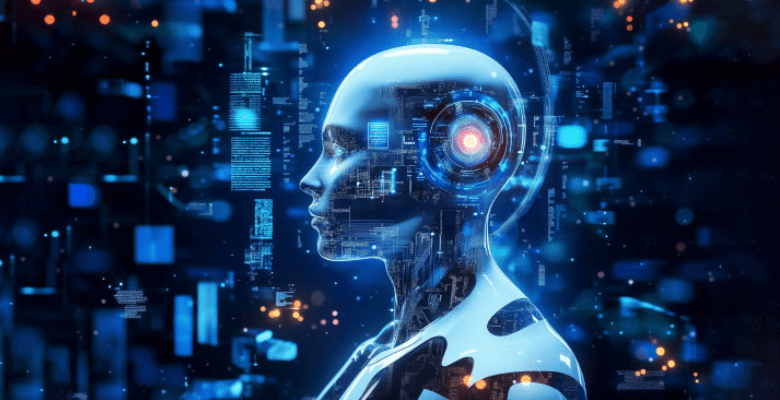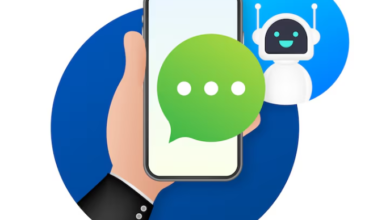The Future of Artificial Intelligence: How AI Is Shaping Our World

Introduction: The Dawn of a New Era
Artificial Intelligence (AI) is no longer just a futuristic concept—it’s a driving force behind significant change in the modern world. From automating mundane tasks to solving complex problems, AI is revolutionizing every aspect of our lives. In this article, we explore the future of Artificial Intelligence, examining its growing influence across industries, the ethical dilemmas it raises, and what lies ahead for AI in the coming years.
1. What is Artificial Intelligence?
1.1 Definition and History of AI
Artificial Intelligence refers to the simulation of human intelligence in machines that are programmed to think and act like humans. AI can learn from data, make decisions, and adapt to changing environments. The history of AI dates back to the 1950s when pioneers like Alan Turing and John McCarthy first conceptualized the idea of machines that could mimic human cognitive functions.
1.2 Types of AI: Narrow vs. General AI
AI can be classified into two main types: Narrow AI and General AI. Narrow AI, also known as Weak AI, is designed to perform a specific task, such as facial recognition or language translation. General AI, on the other hand, is still theoretical and refers to machines that could perform any intellectual task that a human can do.
See also: technefi
2. How AI is Transforming Industries
2.1 AI in Healthcare
AI is revolutionizing healthcare by improving diagnostics, personalizing treatment plans, and accelerating drug discovery. AI-powered tools, such as image recognition software, can analyze medical images more accurately than humans, leading to faster diagnoses. Additionally, AI is being used to predict patient outcomes, ensuring more effective and personalized care.
2.2 AI in Business and Finance
In business, AI is optimizing customer service through chatbots, enhancing decision-making through predictive analytics, and streamlining supply chains. In finance, AI algorithms are used for fraud detection, automated trading, and risk management, offering a significant edge in the industry.
2.3 AI in Transportation
AI is transforming transportation with innovations such as autonomous vehicles. Self-driving cars, trucks, and drones powered by AI have the potential to reduce accidents, increase efficiency, and revolutionize logistics. AI-driven traffic management systems could also optimize road networks, reducing congestion and improving public transportation.
2.4 AI in Education
AI is reshaping education by enabling personalized learning experiences. AI-powered tutoring systems adapt to individual students’ learning styles, helping them progress at their own pace. Additionally, AI assists in administrative tasks, such as grading, allowing educators to focus more on teaching.
3. AI and Its Role in Innovation
3.1 AI and Scientific Discovery
AI is accelerating scientific research by analyzing vast amounts of data, making predictions, and identifying patterns that humans may miss. It is being used in areas like climate change modeling, drug development, and space exploration, where it can process complex datasets to generate innovative solutions.
3.2 AI and Creativity: Art, Music, and Design
AI is also contributing to the creative industries. From generating art to composing music, AI tools are pushing the boundaries of creativity. Algorithms like OpenAI’s GPT models can write stories, while platforms like DeepArt can create stunning visual art. These developments are challenging our perceptions of creativity and art.
4. The Ethical Considerations of AI
4.1 AI and Privacy Concerns
As AI systems become more pervasive, privacy issues arise. AI systems often rely on vast amounts of data to function effectively, raising concerns about how this data is collected, stored, and used. Ensuring that AI respects user privacy is a critical challenge for developers and regulators alike.
4.2 AI Bias and Discrimination
AI algorithms can perpetuate bias if they are trained on biased data. This can lead to discriminatory outcomes, particularly in areas like hiring, law enforcement, and healthcare. Addressing these biases is crucial to ensure that AI is used ethically and fairly.
5. The Impact of AI on Jobs and Employment
5.1 Job Automation and Displacement
One of the most significant concerns surrounding AI is its potential to displace human workers. Automation is already changing industries like manufacturing and customer service, where AI can perform repetitive tasks more efficiently. However, there is also the fear that AI could lead to mass unemployment.
5.2 The Future of Work: New Opportunities Created by AI
While AI may displace certain jobs, it is also creating new opportunities. Roles in AI development, data science, and machine learning are on the rise. Moreover, AI is enhancing human capabilities, enabling workers to focus on more complex and creative tasks.
6. The Role of AI in Everyday Life
6.1 AI in Smart Homes
AI is making homes smarter and more efficient. Devices like smart thermostats, voice-controlled assistants, and automated lighting systems are powered by AI, learning user preferences and optimizing energy consumption. As these devices become more integrated, they will provide increasingly personalized and efficient experiences.
6.2 AI Assistants and Personalization
AI is also behind the personal assistants many people use daily, like Siri, Alexa, and Google Assistant. These tools can respond to commands, provide recommendations, and learn user preferences, creating a more personalized experience.
7. The Future of Artificial Intelligence
7.1 The Road Ahead: What Does the Future Hold for AI?
The future of AI is incredibly promising. With advancements in machine learning, neural networks, and quantum computing, AI will become even more powerful, versatile, and integral to daily life. We can expect to see AI playing an even larger role in fields like healthcare, education, and transportation, providing innovative solutions to complex problems.
7.2 How AI Will Continue to Shape Our World
AI is expected to be at the heart of many future innovations. From enhancing the way we work to revolutionizing industries and improving quality of life, AI will be a transformative force. However, this will also require careful management and regulation to ensure its responsible development and use.
8. Frequently Asked Questions
8.1 What is the difference between AI and Machine Learning?
AI refers to machines designed to mimic human intelligence, while machine learning is a subset of AI focused on teaching machines to learn from data.
8.2 Can AI surpass human intelligence?
While AI can outperform humans in specific tasks, it is still far from surpassing general human intelligence, especially in areas requiring emotional intelligence, creativity, and complex reasoning.
8.3 How can AI benefit society in the long term?
AI can improve healthcare, increase productivity, solve global challenges, and enhance our quality of life by automating mundane tasks and allowing humans to focus on more meaningful activities.
8.4 Is AI dangerous?
AI can be dangerous if misused or if it evolves without proper regulation. The key to ensuring AI benefits society is to manage it responsibly and develop ethical guidelines.
8.5 What industries are most likely to be transformed by AI?
Industries such as healthcare, finance, transportation, and education are expected to experience the most significant transformations due to AI.
8.6 Will AI replace human workers in the future?
While AI may replace certain tasks, it is more likely to complement human work rather than fully replace it. New opportunities for workers in AI-related fields are emerging.
Conclusion
The future of Artificial Intelligence holds immense potential. From transforming industries to revolutionizing daily life, AI will continue to shape our world in ways we can’t fully predict. However, as we embrace this new era, it’s crucial that we approach AI with caution, ensuring its ethical development and making the most of its transformative capabilities.




